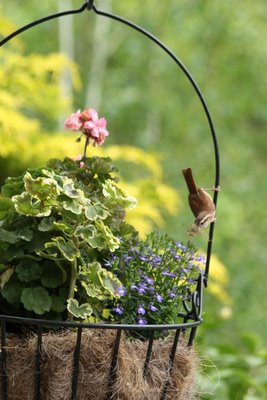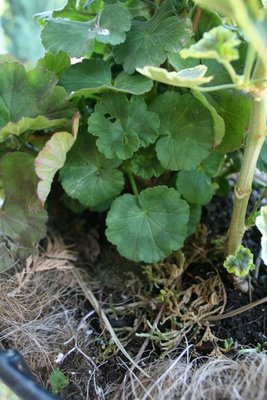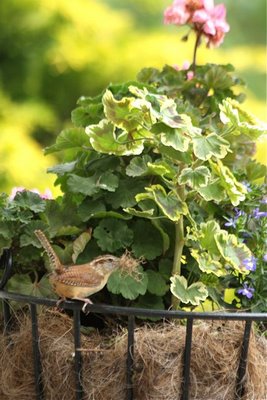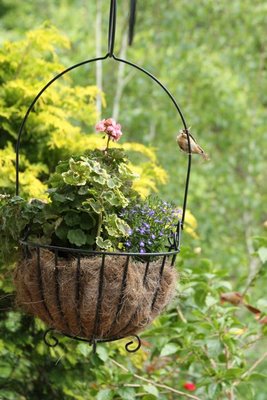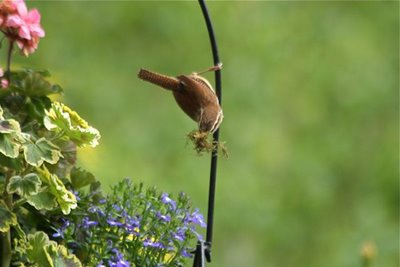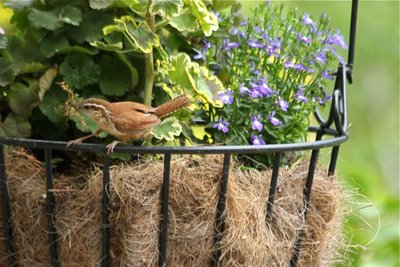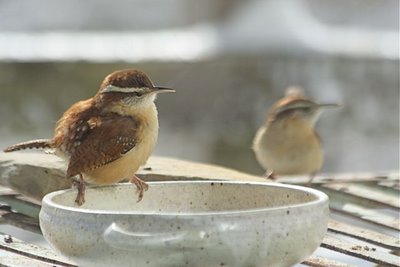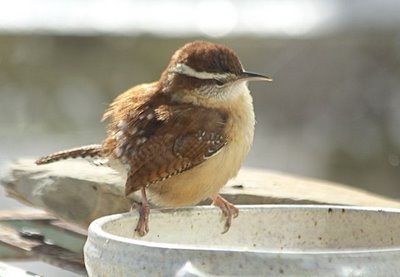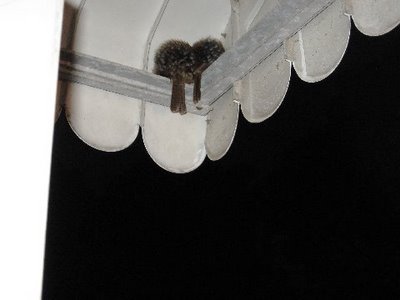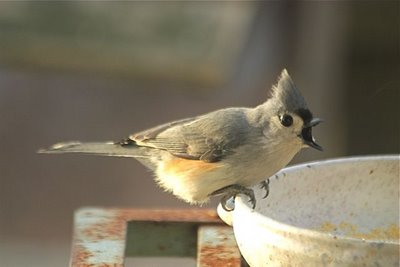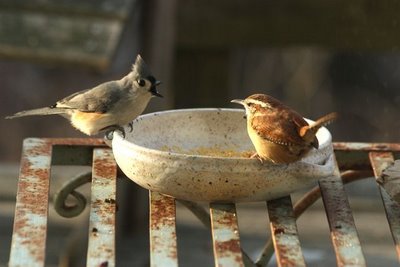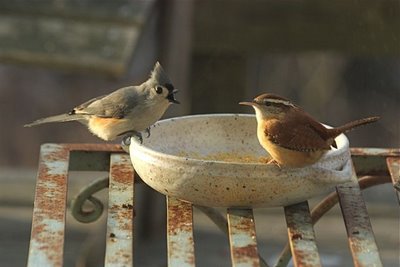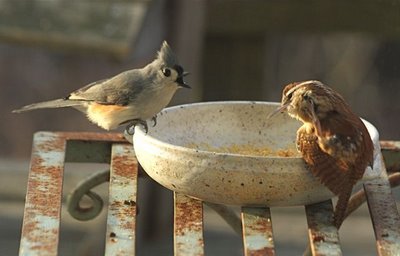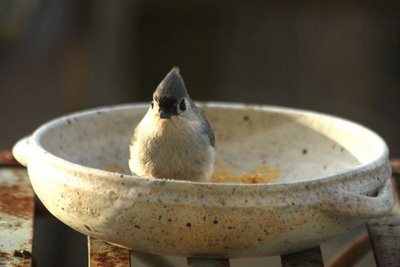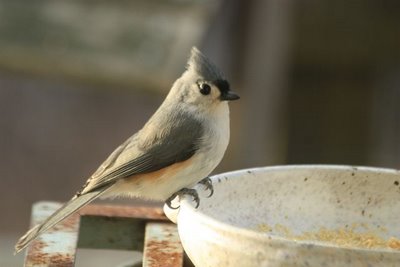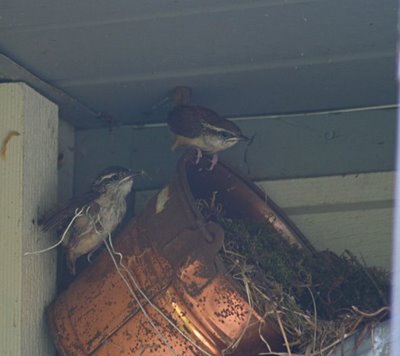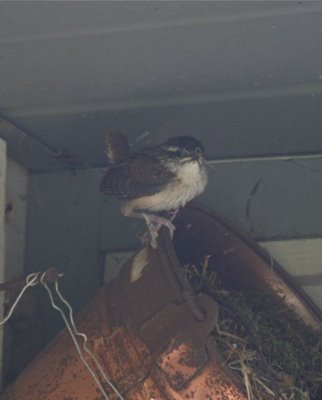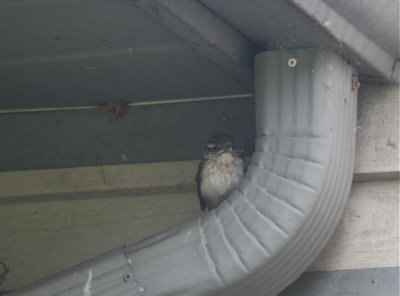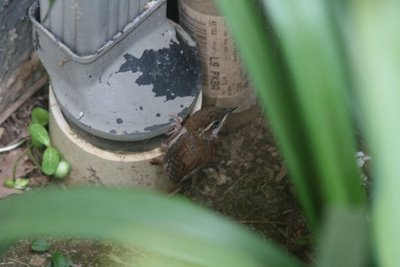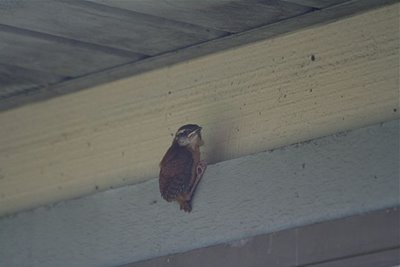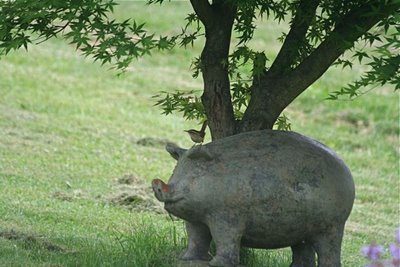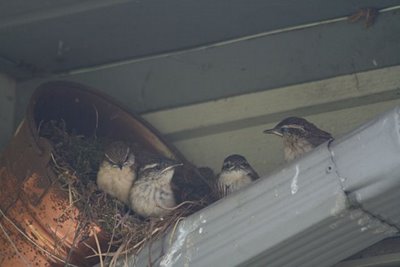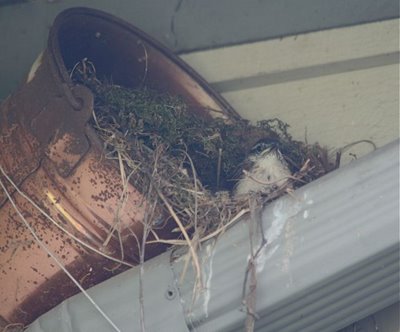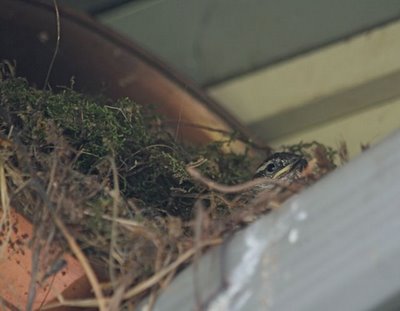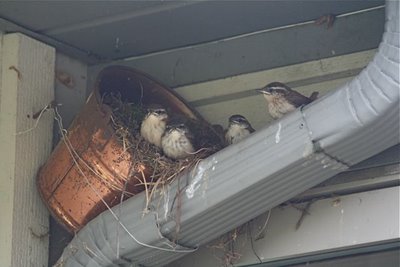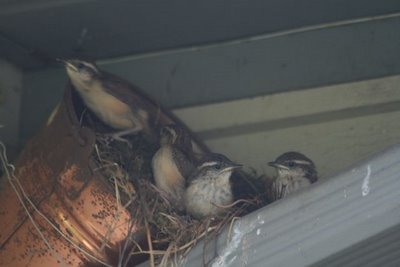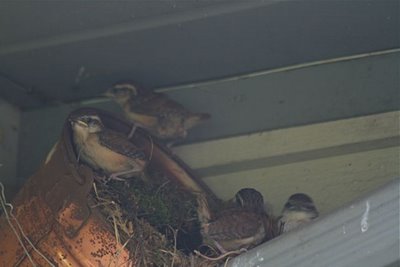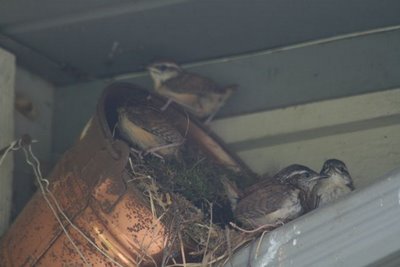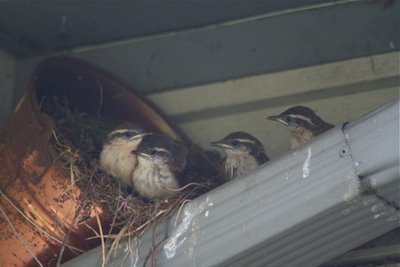The First Egg
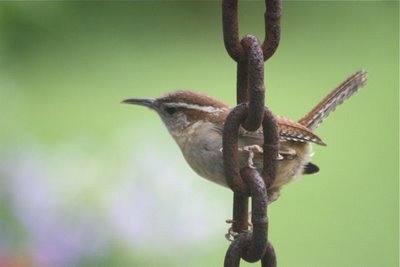
Little teakettles, that's what they are, little avian teakettles, with their decurved spout bills and their cocked handle tails. Carolina wrens bring a garden alive.
It took the wren pair only four days to finish their nest. Granted, it wasn't a very impressive nest as Carolina wren nests go. It was barely there. Sometimes that happens when the female bird is ready to lay her eggs NOW. I suspect that might have been the case here. The nest was no sooner constructed than the first egg appeared, small and speckled and very dear.
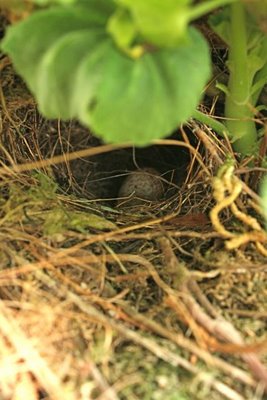
I rolled it out a bit farther to see, then rolled it back into the nest cup.
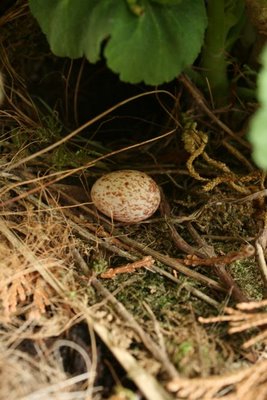
Because the nest was so well tucked under my gerania, I never got a shot of the whole thing. This is it. Once the babies fledged I realized it was really barely there, not much to photograph at all.
This pair was unusual in my experience--extremely quiet, very spooky. Previous pairs that have nested at our door have been bold and noisy, especially as the nestlings got older and near fledging time. The adults gave voice to a constant Purrrll! Purrrll! note at the slightest hint of a threat.
This pair, by contrast, was nearly silent: no cheery duets, no scolding. Not only were they silent, they were spooky as all getout, and the female bolted off the nest whenever we mounted the front porch stairs or touched the door handle to come in or out. She'd leave in the middle of the night if I so much as let Chet Baker out for a widdle. She was so spooky I began to wonder if her eggs would ever hatch; she'd leave them cold for much of the day even after incubation had started.
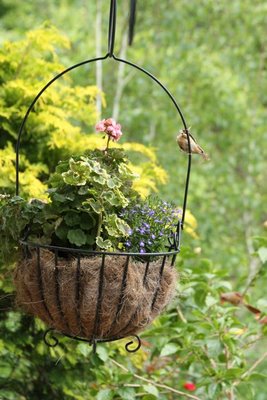
But the wren was in luck: We left for North Dakota and Montana soon after incubation of her five eggs began. She had two weeks of nearly undisturbed peace to sit and warm her eggs, then brood her hatchlings. When we returned, her babies were four days old. By then, the pair's bond to them was so strong that the disturbance we caused barely interrupted the flow of their nest visits.
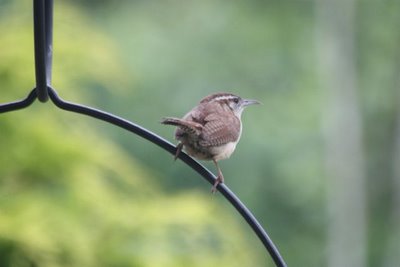
I couldn't wait to get home on June 3 to see what had happened in the little nest over the last two weeks. Five pairs of yellow beak flanges greeted me; a tentative finger in the nest contacted warm downy flesh. Hooray! They'd made it through without Mama Bird's watchful eye. Let the photography begin!
Labels: Carolina wren nest, Carolina wrens

